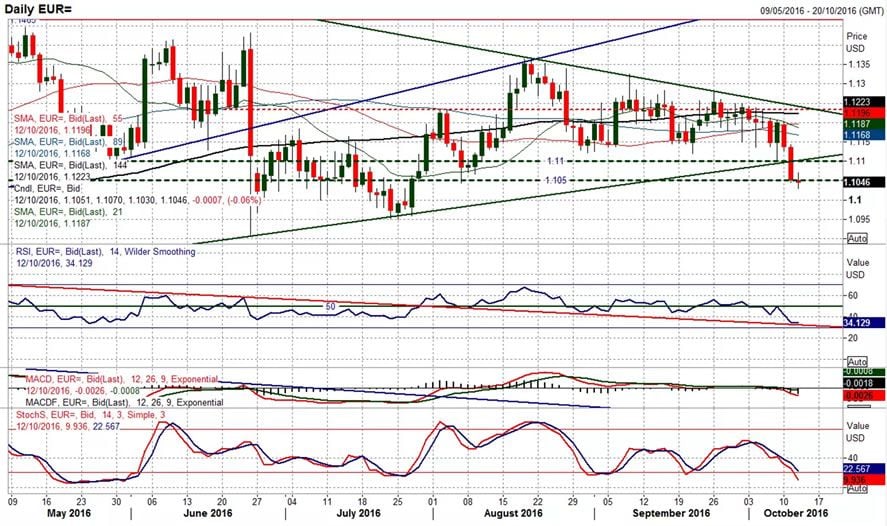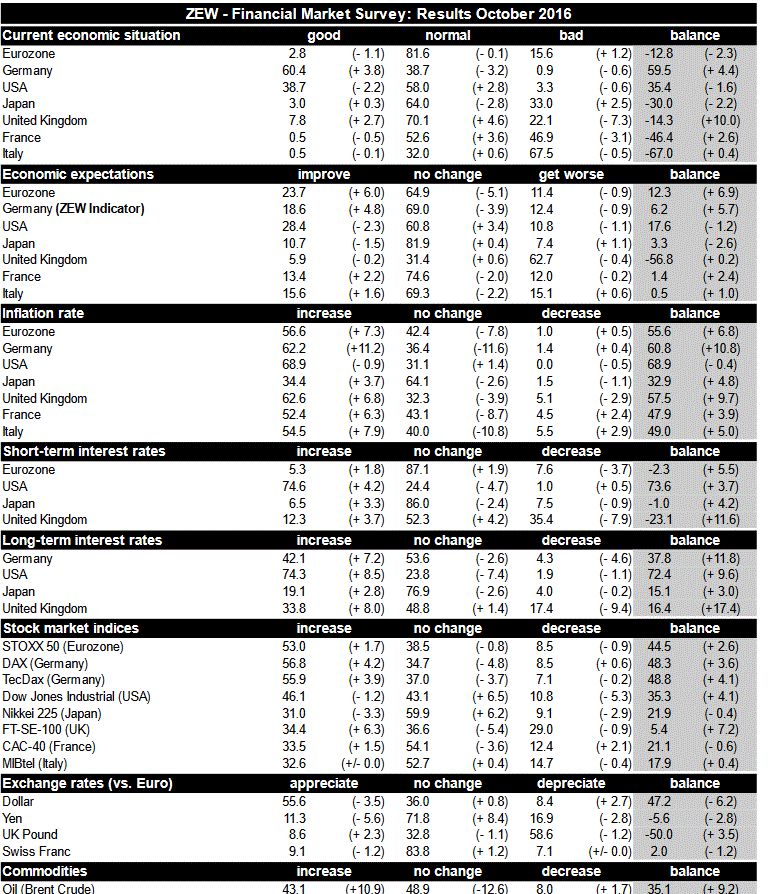EUR/USD Slips Below Key Support Despite Better-than-Expected ZEW Data

Strong German data is not enough for the Euro to overcome Dollar strength and the EUR/USD has subsequently fallen through a key support zone.
The Euro to Dollar exchange rate trades at 1.1043 at the time of writing, down from 1.1192 seen at the start of the week.
Three days of consecutive declines in EUR/USD leaves it looking increasingly exposed to a run to the more solid support level lying at 1.10.
"An increasingly negative outlook for the Euro is developing. I have been looking at the support around $1.1100 as being key and yesterday’s decisive downside break has changed what had been a medium term neutral range play into a bearish Euro/strong Dollar play," says Richard Perry at Hantec Markets.
Perry says the close below $1.1120 support effectively completed a descending triangle but would be measured as a top pattern with a downside implied target of a minimum medium term 160 pips (i.e. $1.0960) but perhaps as much as 240 pips ($1.0880).
According to the analyst this would certainly suggest that the key July low at $1.0950 is now within range.
"Rallies will now be seen as a chance to sell, with the $1.1120 old support turning into new resistance for any pullback rally," says Perry.
The ZEW survey of financial professionals is a reliable indicator of future growth and the upbeat October results will have supported a more positive vision for the Eurozone and its continued, albeit slow, recovery.
The survey asks roughly 350 financial professionals what they think of the 'current situation' in Germany and the Eurozone and what they think the economy will be like in six months’ time - or 'economic expectations'.
The results are then presented as a ‘balance’, in a percentage form, between the optimists and pessimists.
In October the results showed the majority of respondents were overall optimistic both about the current situation and the future prospects in Germany, although a little more mixed in their assessment of the Euro region as a whole.
Germany enjoyed a balance of plus 59.5% for 'current situation' and plus 6.2% for 'economic expectations'.
The Eurozone meanwhile only scored a minus 12.8% for 'current situation', although it scored a more upbeat plus 12.3% for expectations (up 6 from the previous month).
This revealed a fairly upbeat outlook for the Eurozone, however, the EUR/USD pair reacted by falling, which is the opposite to what would have been expected.
The reason is the Dollar is on a tear and is rising due to US 10-year bond yields, which themselves rose to a 4-month high on Tuesday.
This is all a consequence of comments indicating a higher probability the Fed will raise interest rates by year-end.
Higher yields tend to attract more foreign investors hungry for returns and as a by-product, the currency becomes more in demand.
The story therefore remains one of Dollar strength for now.







